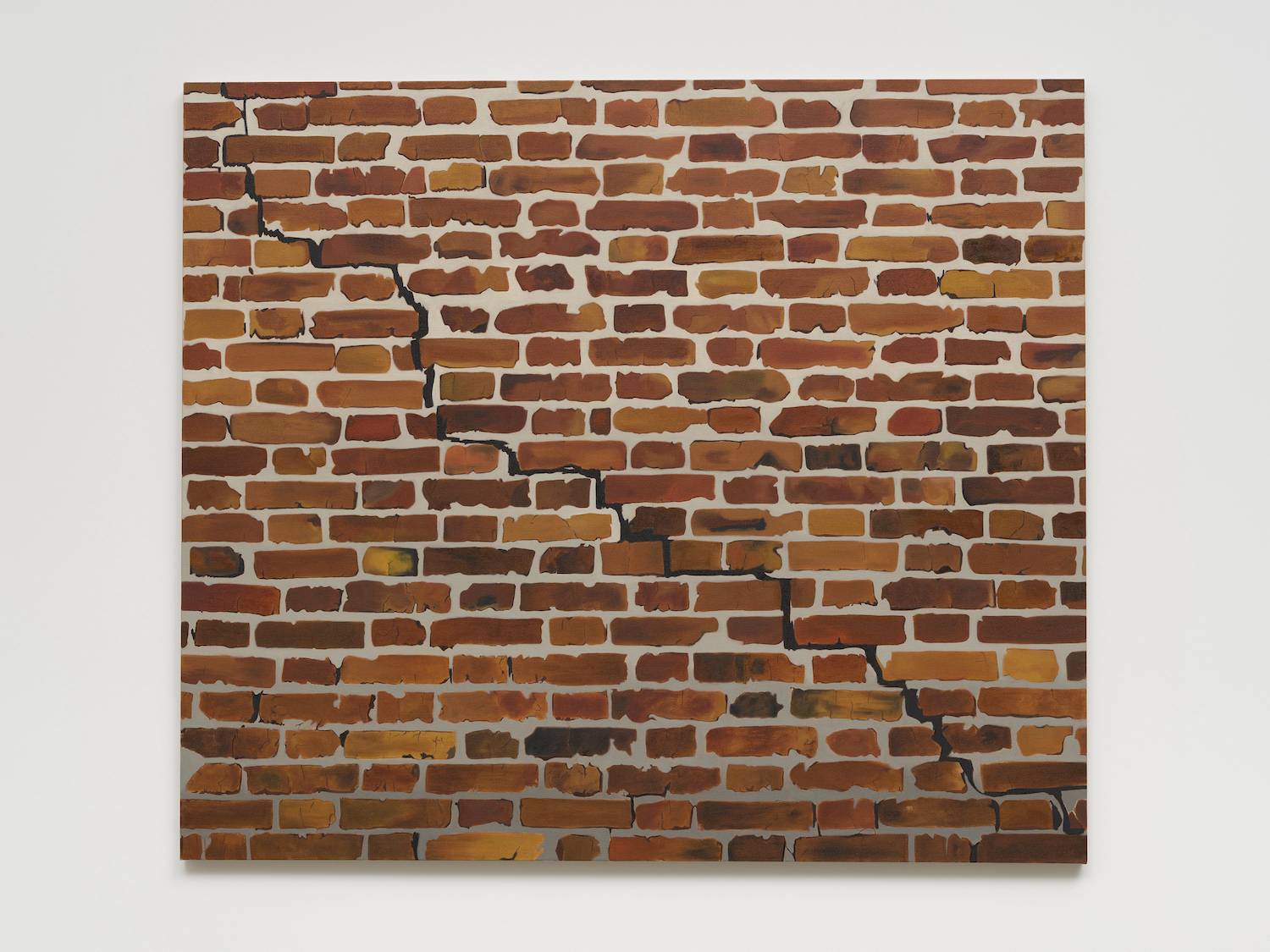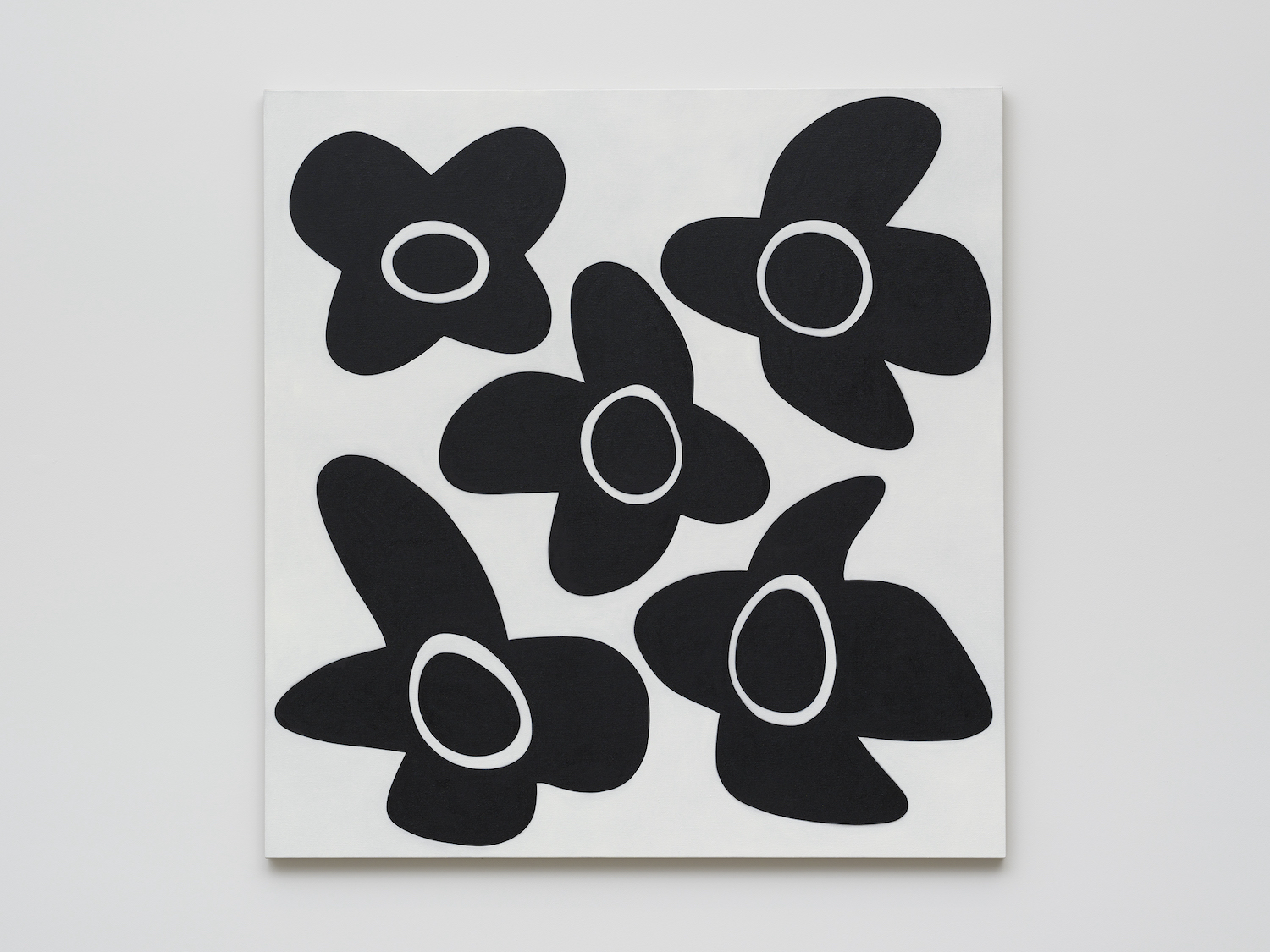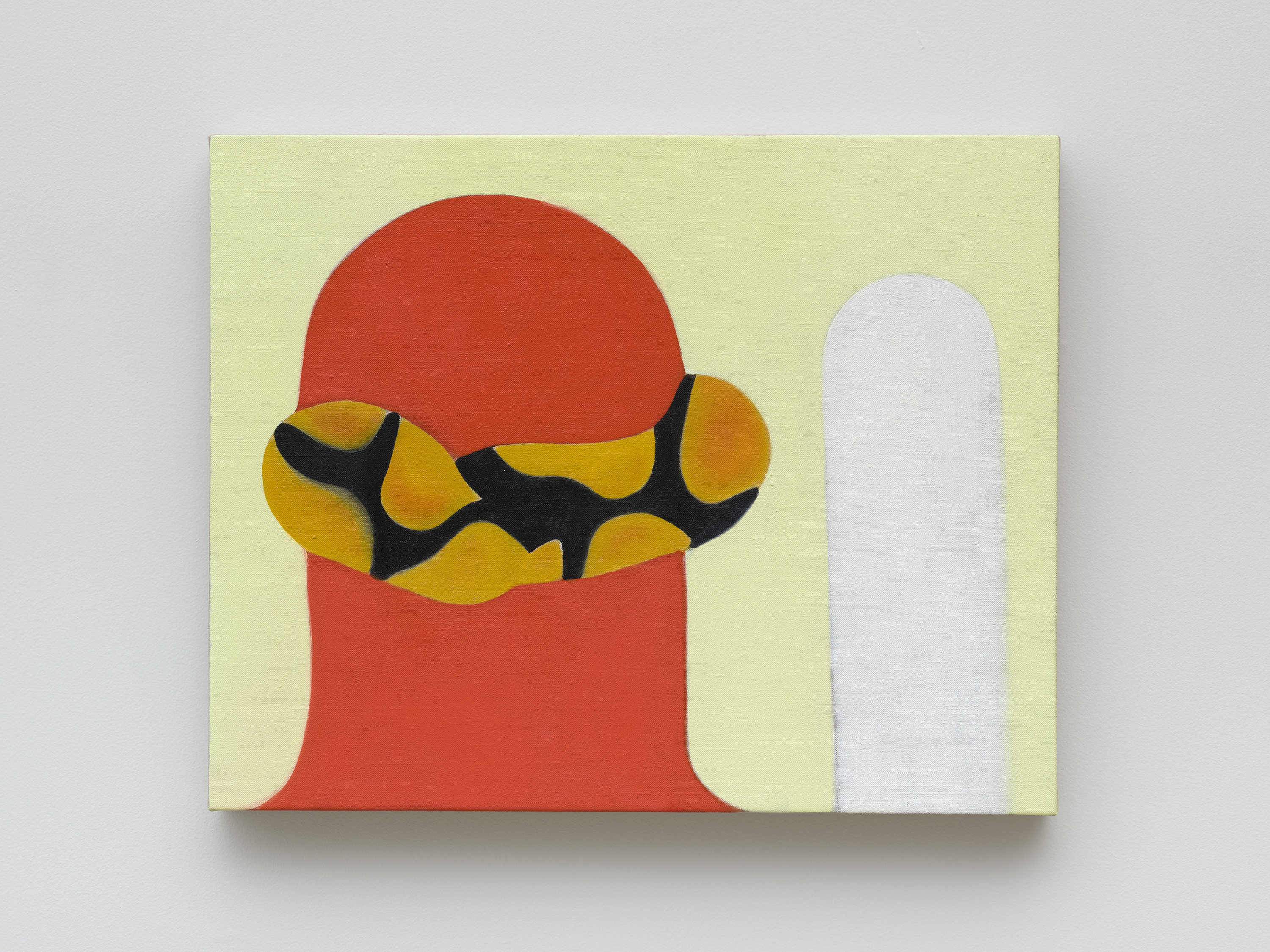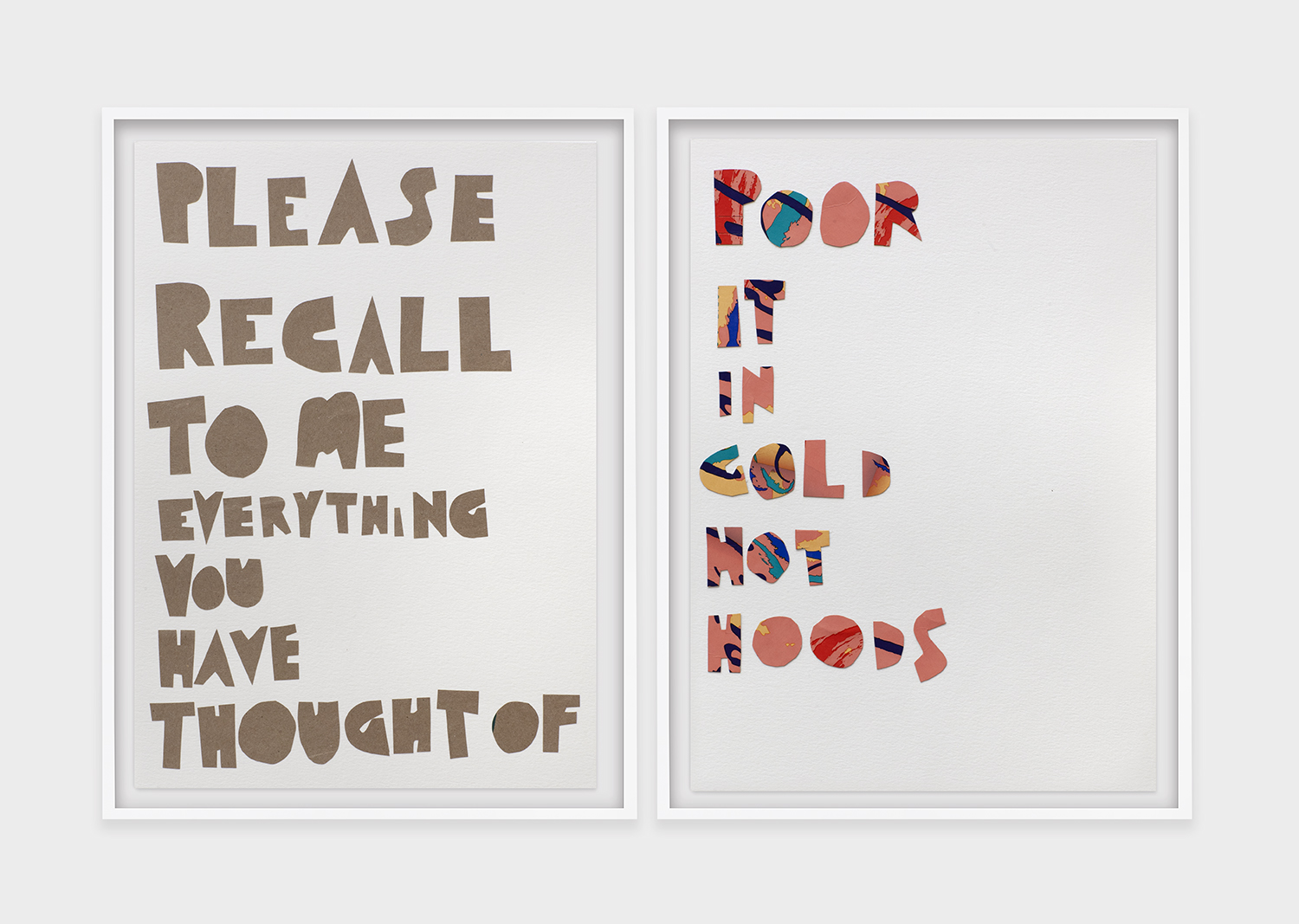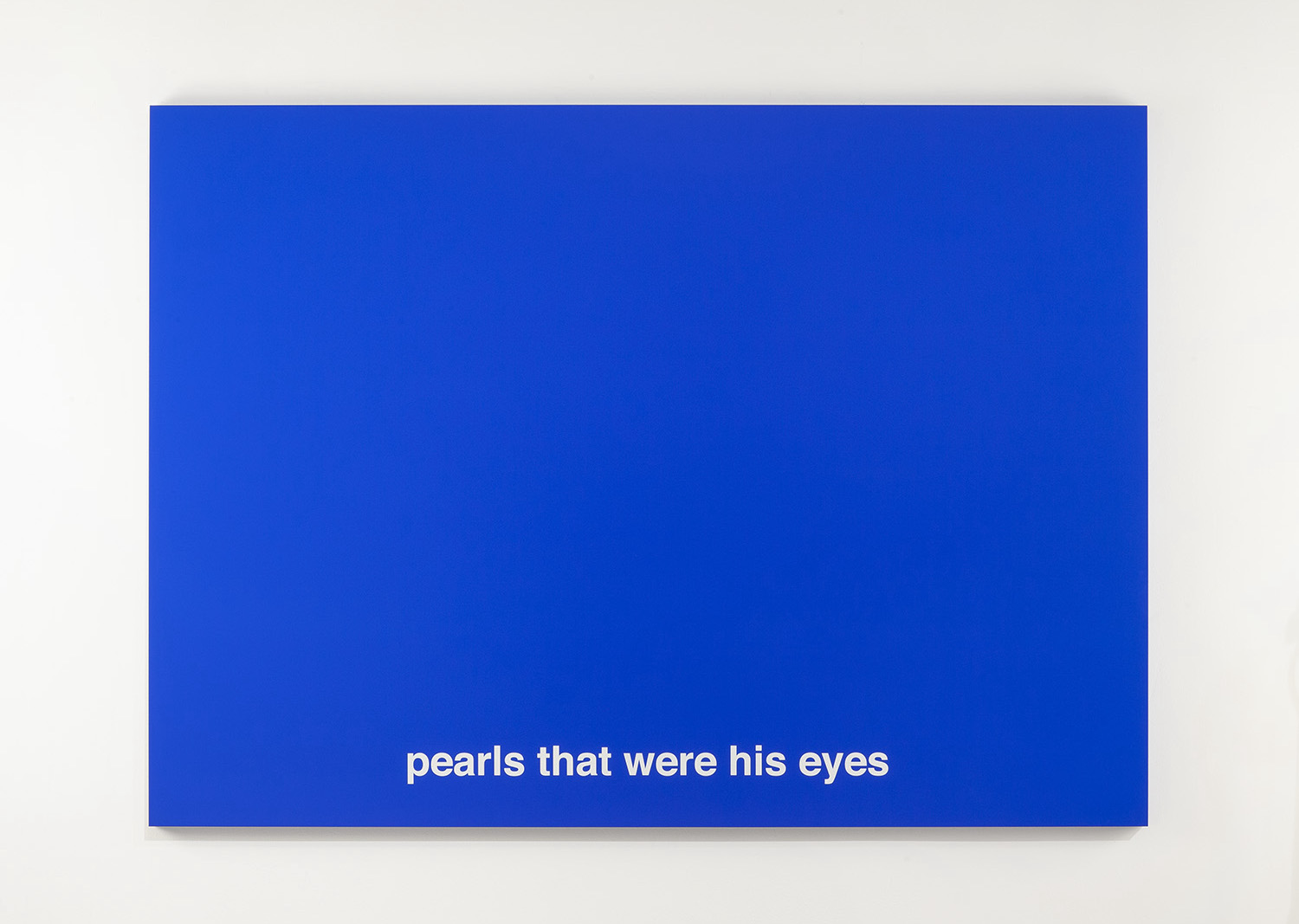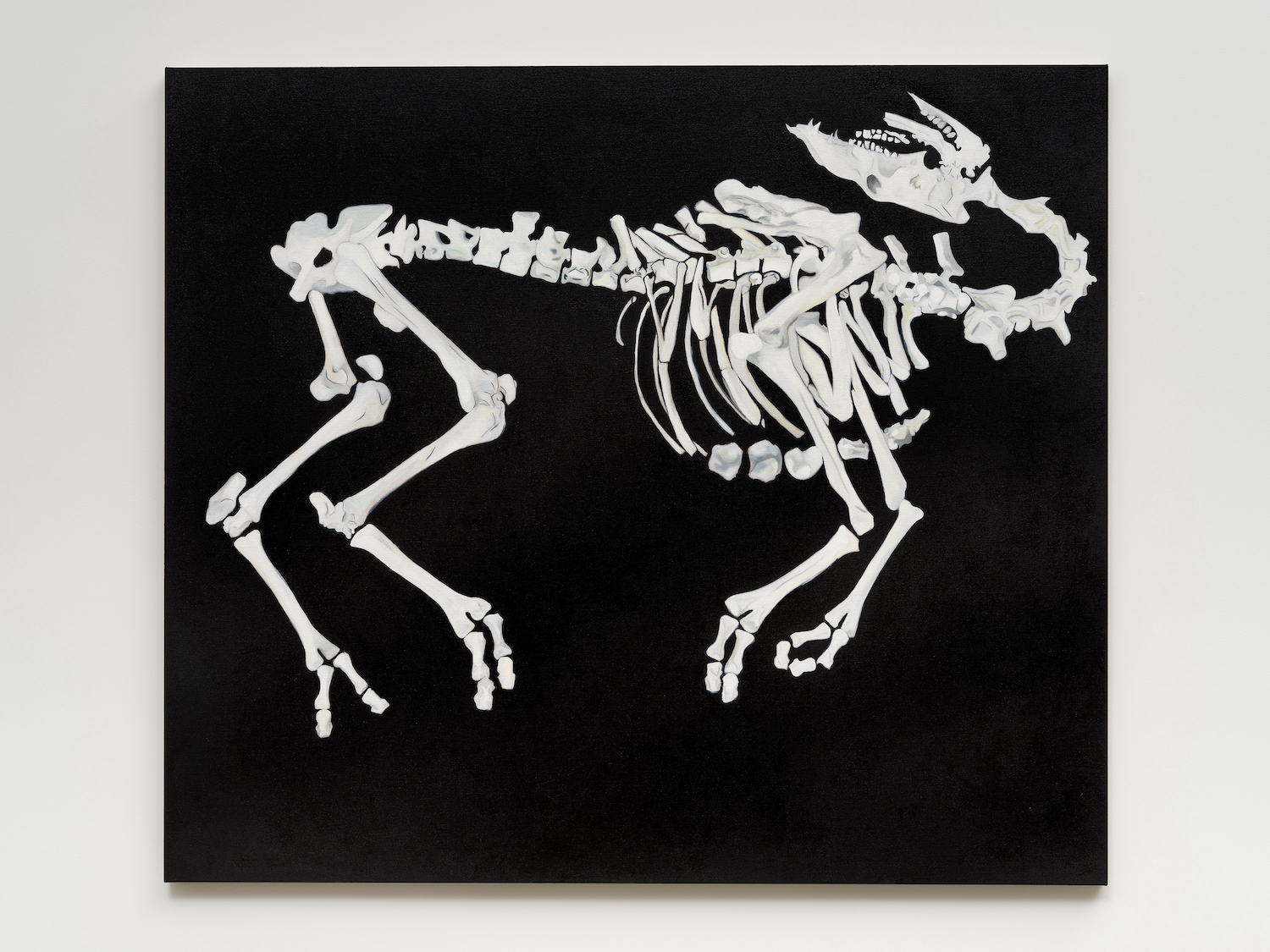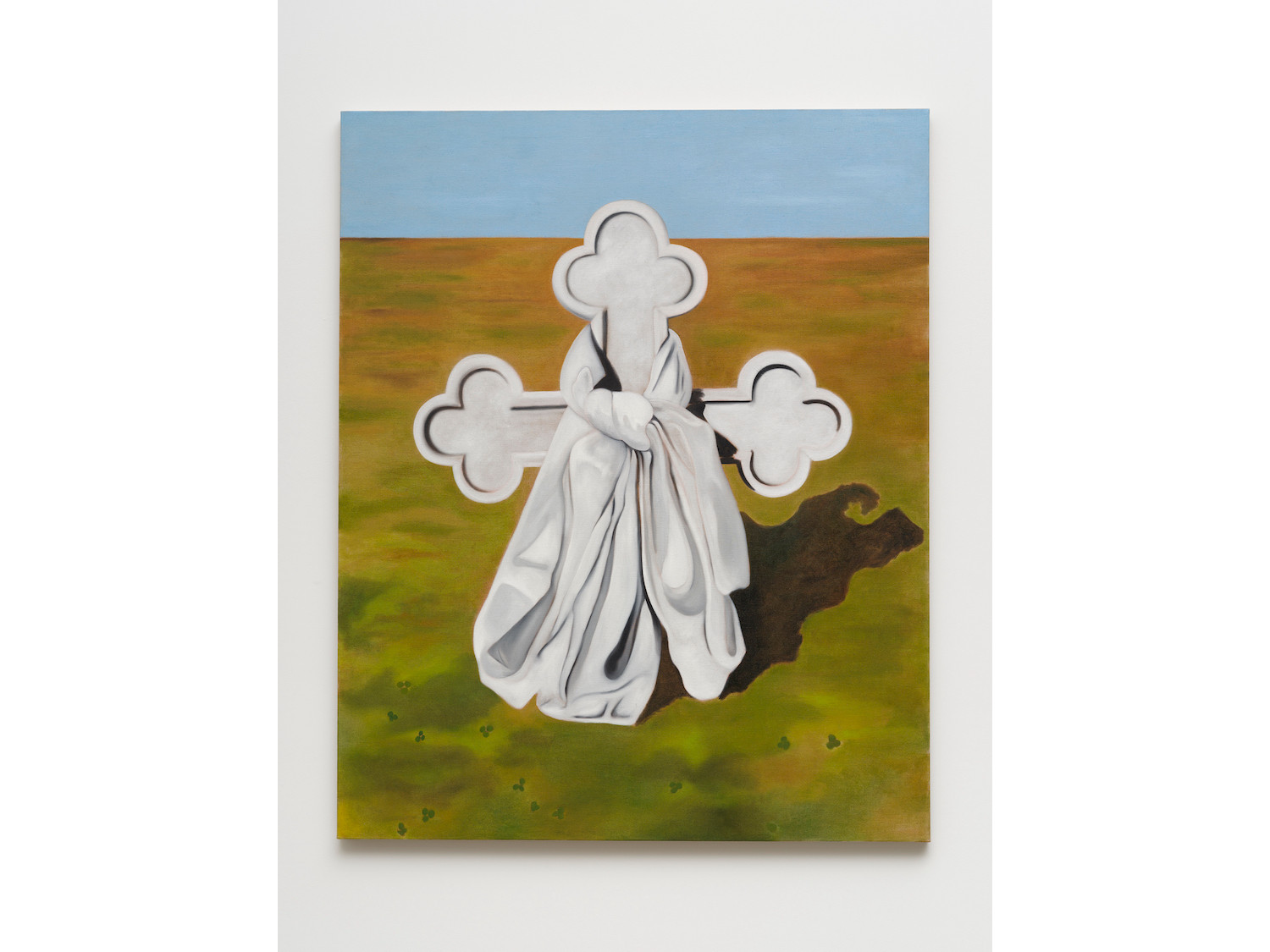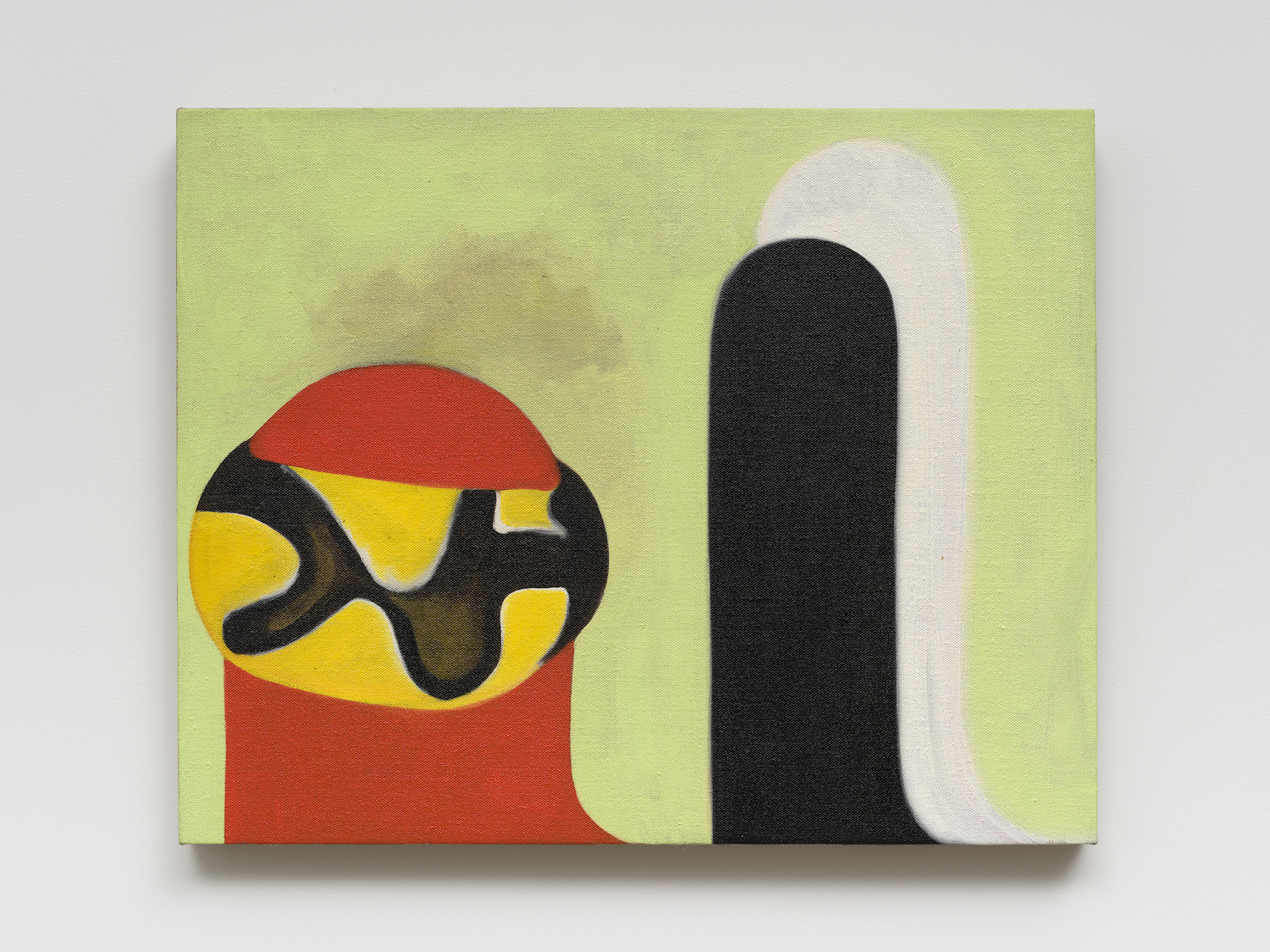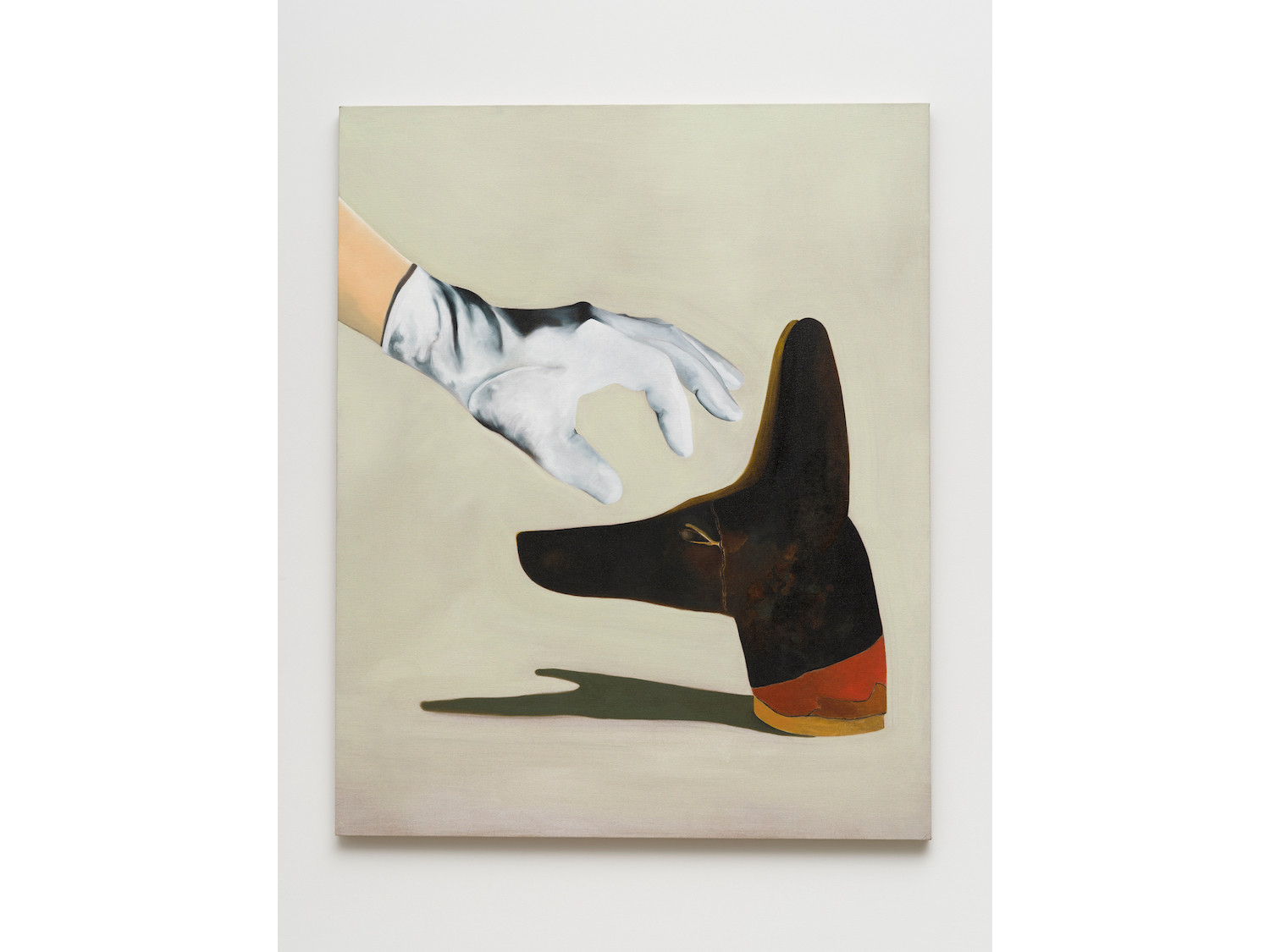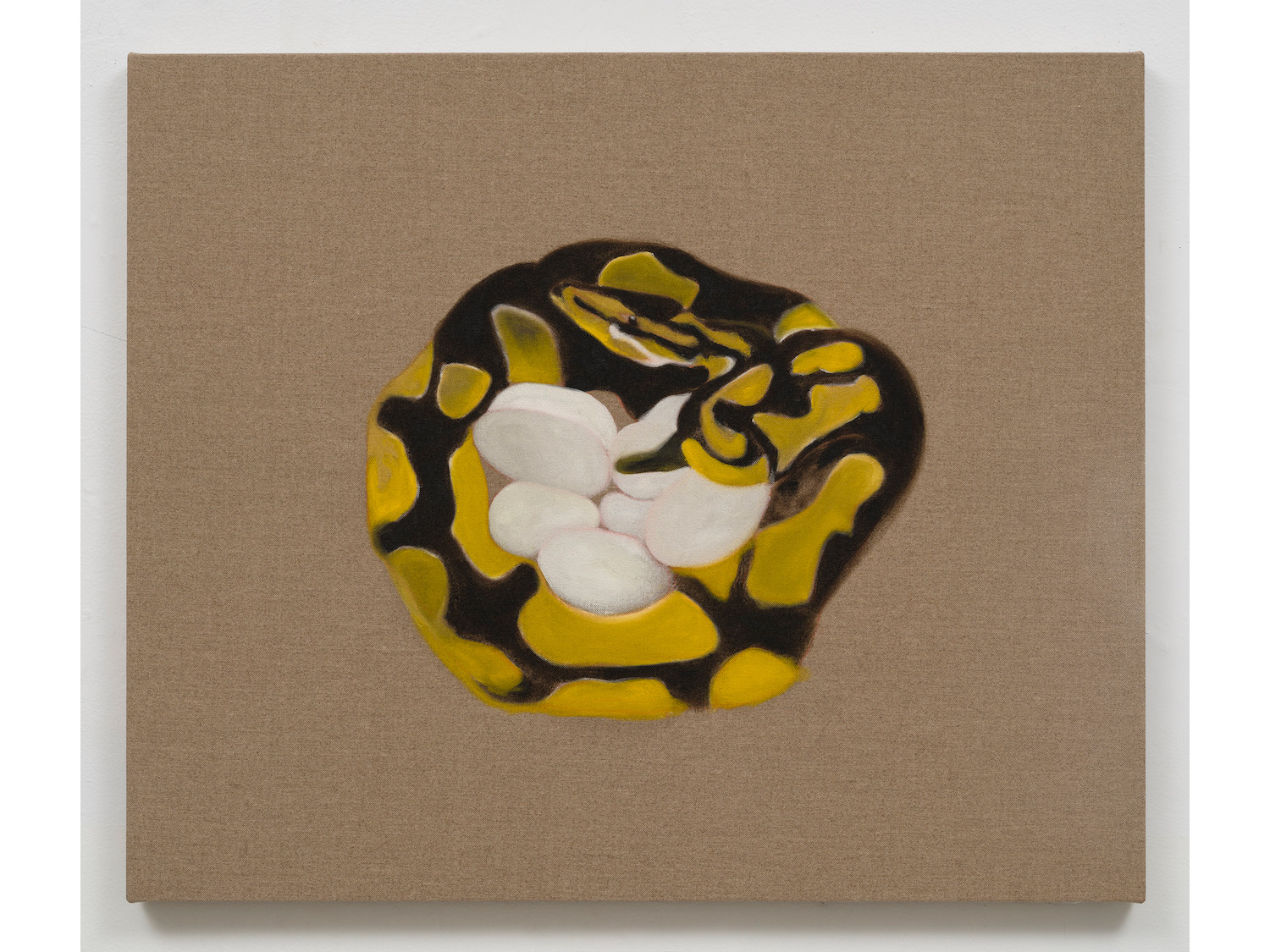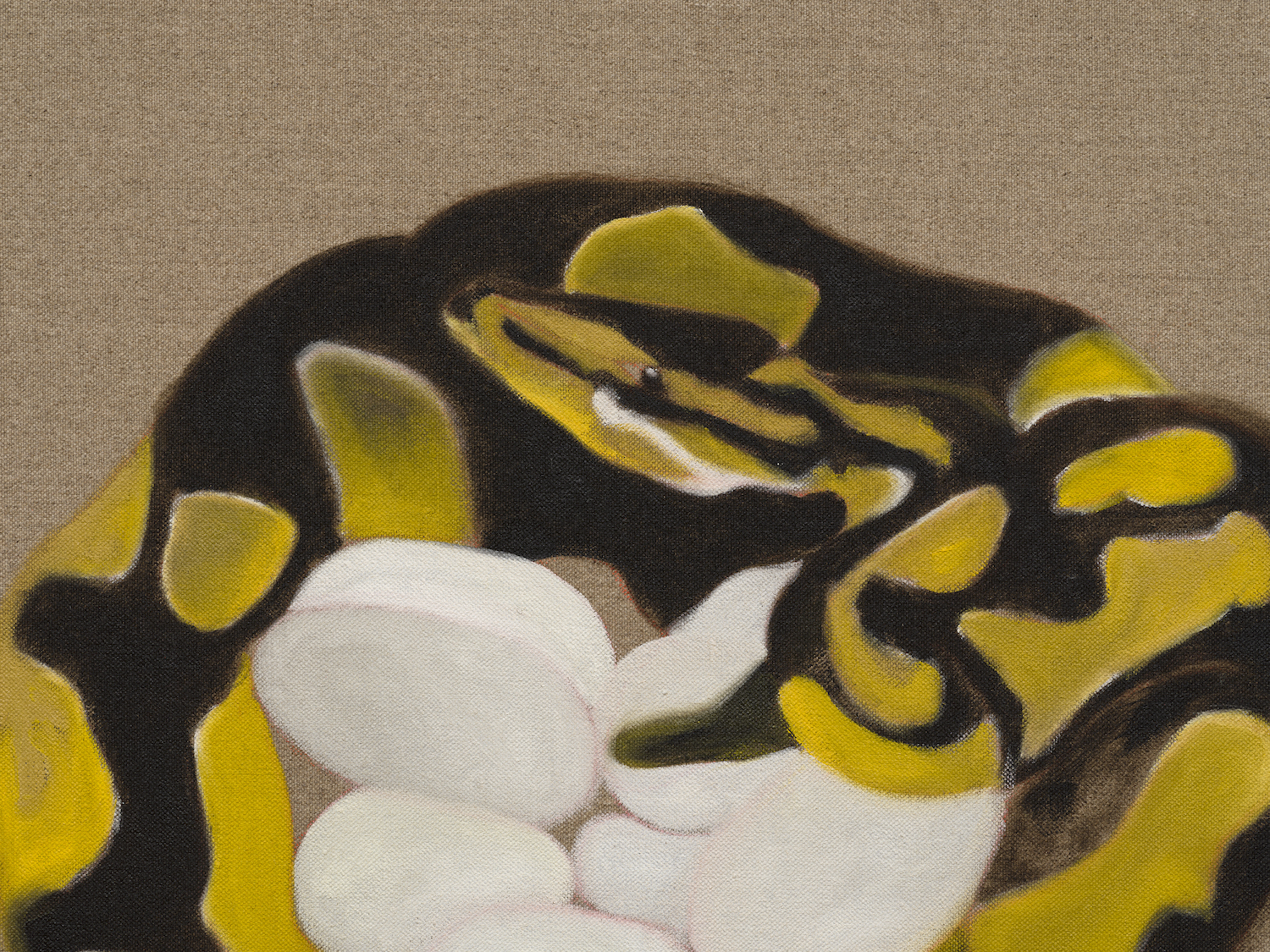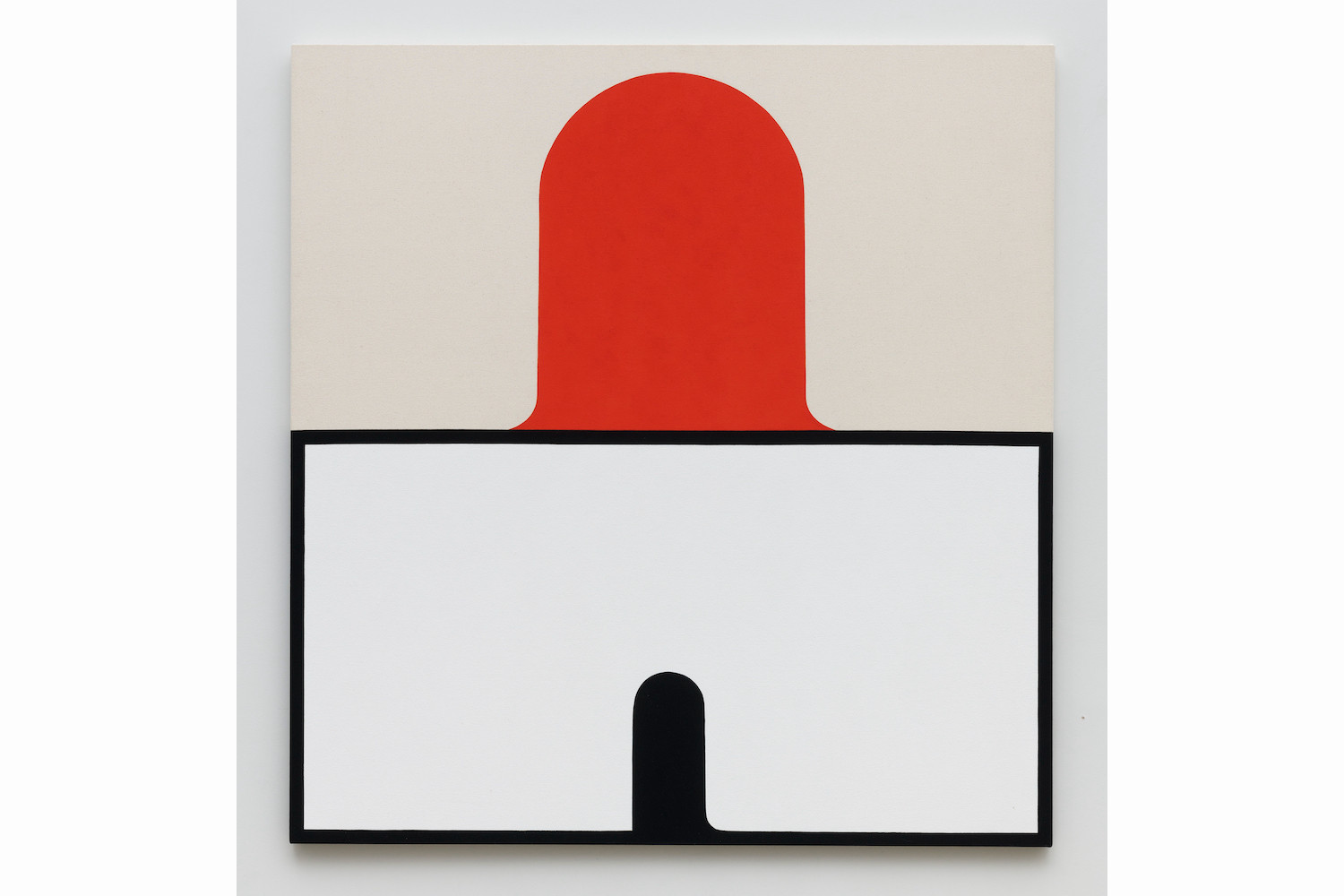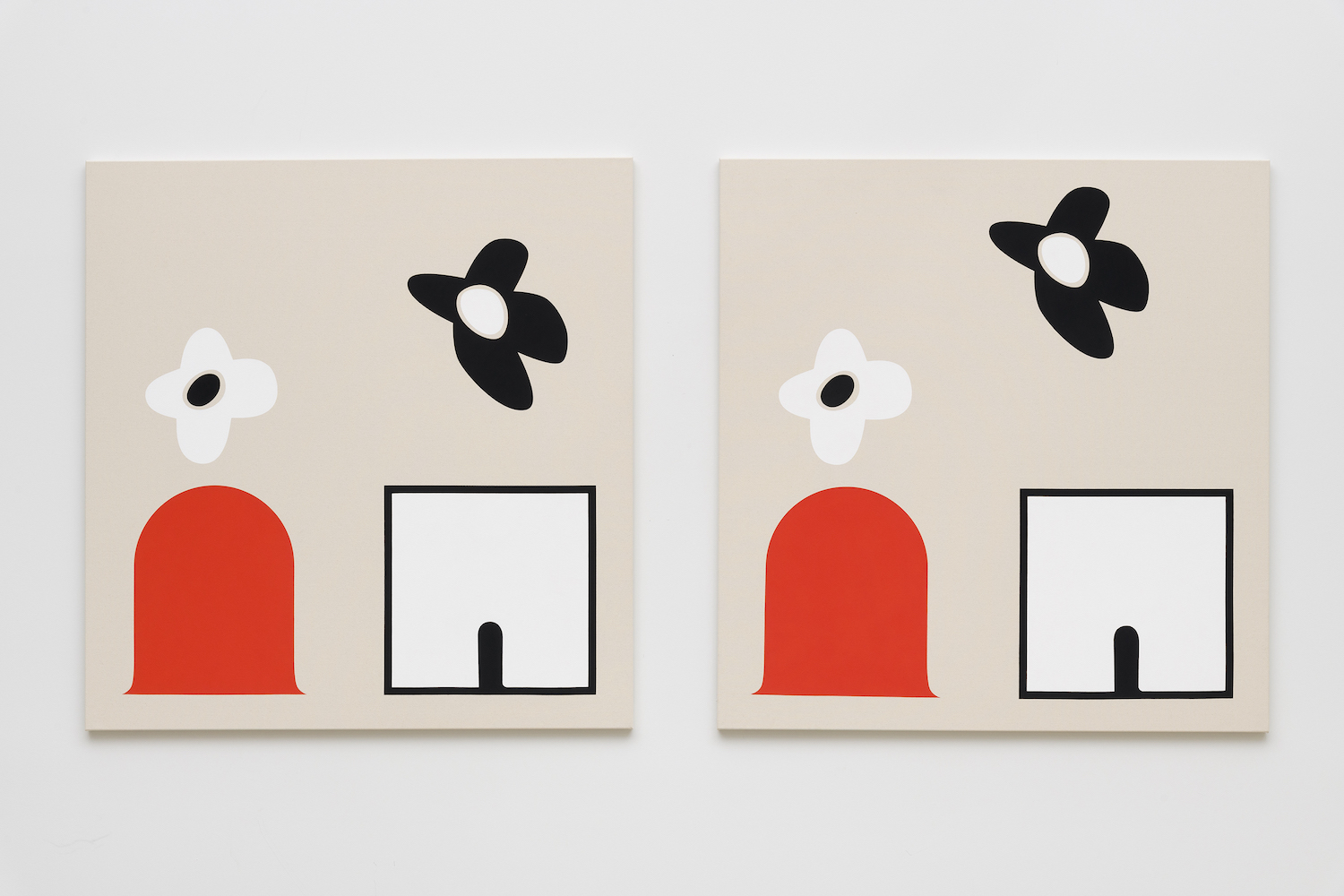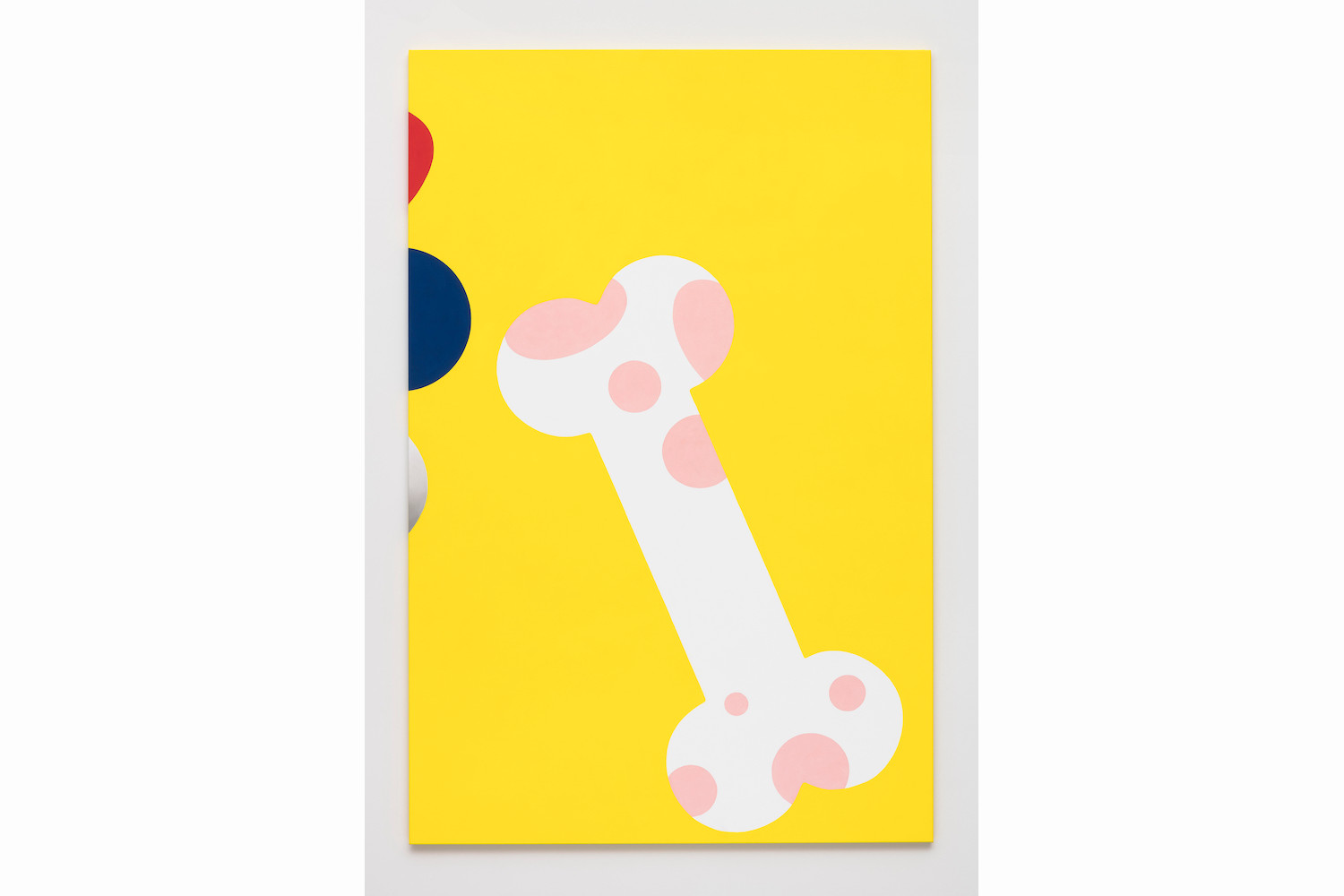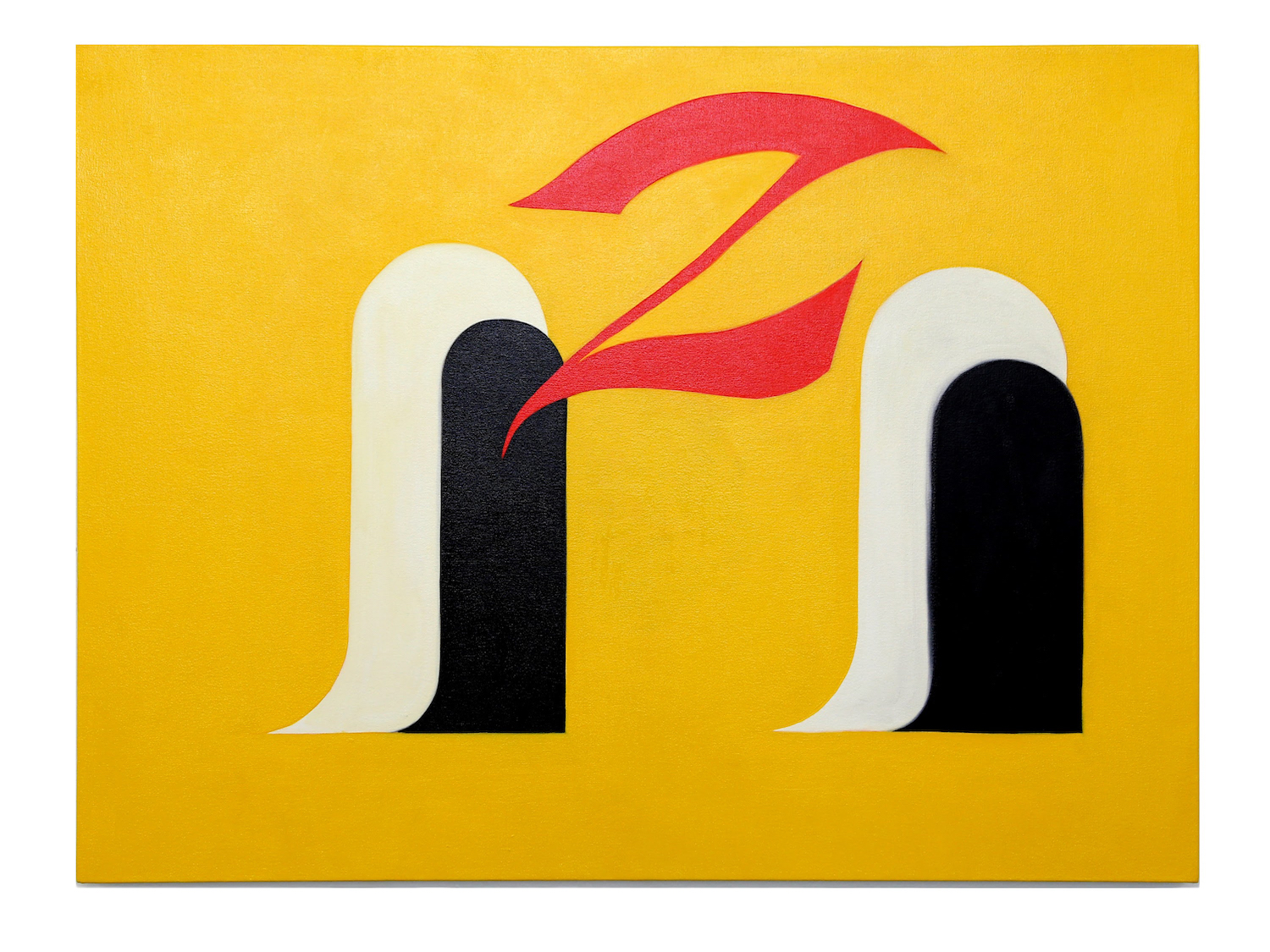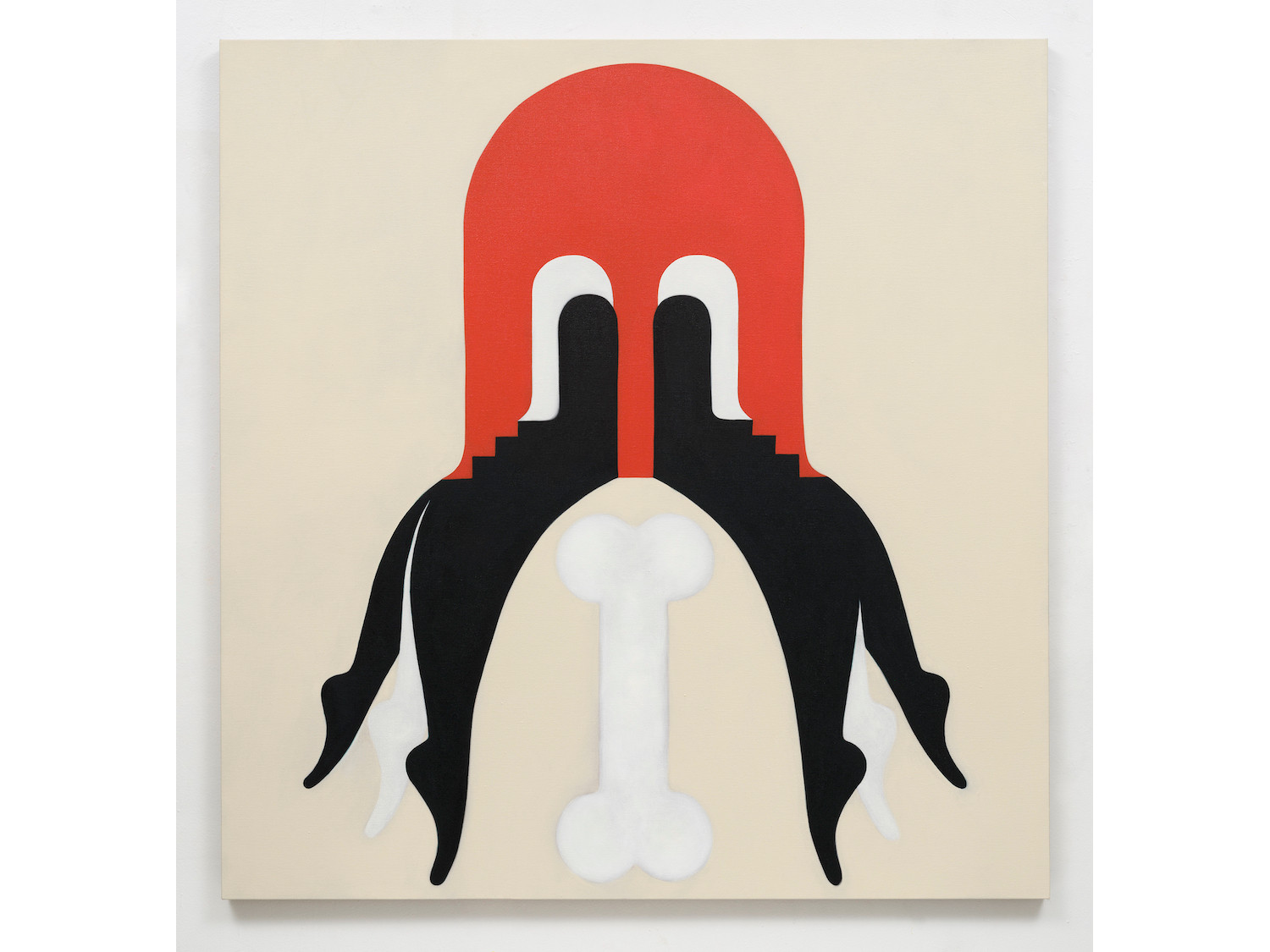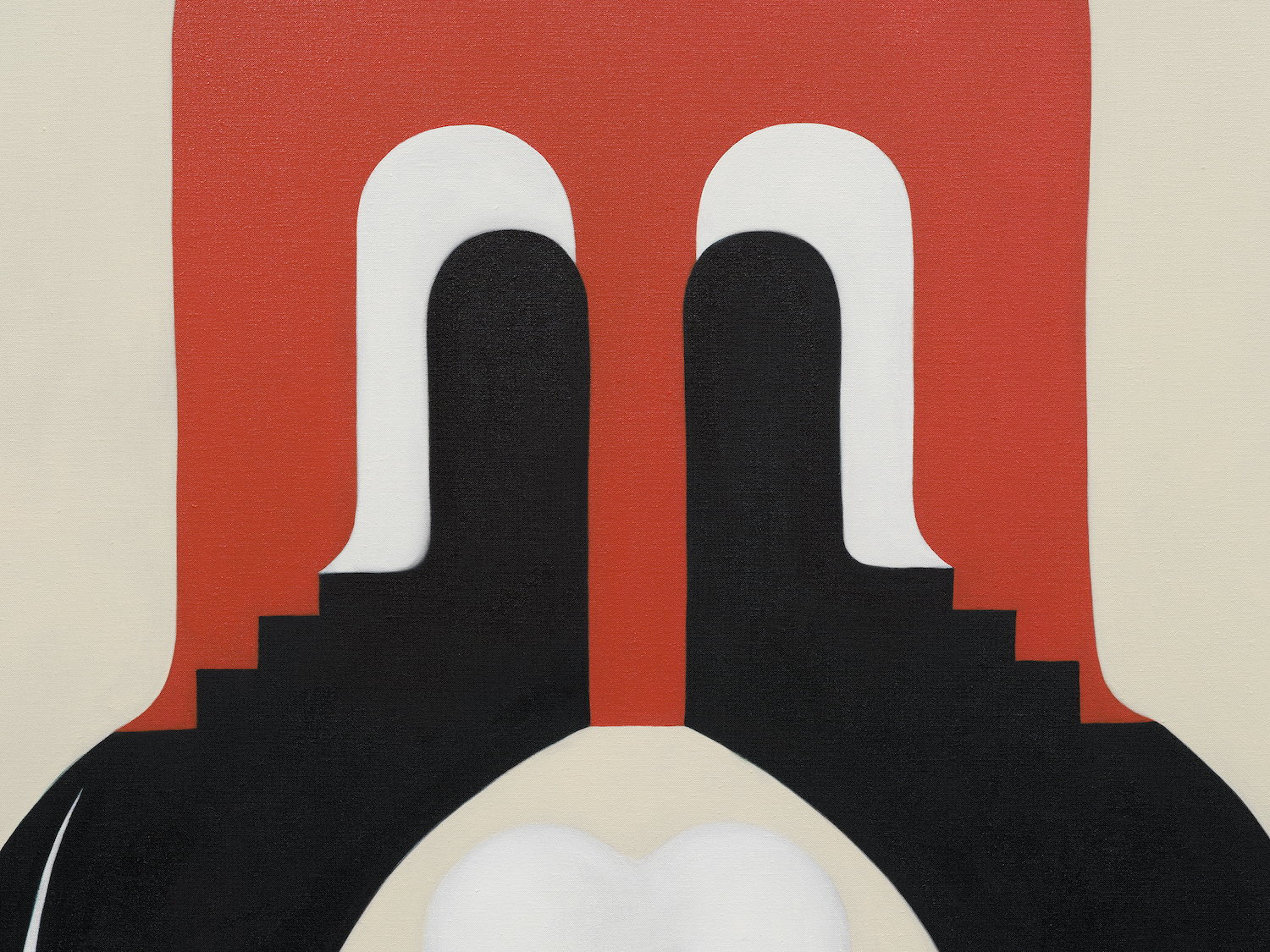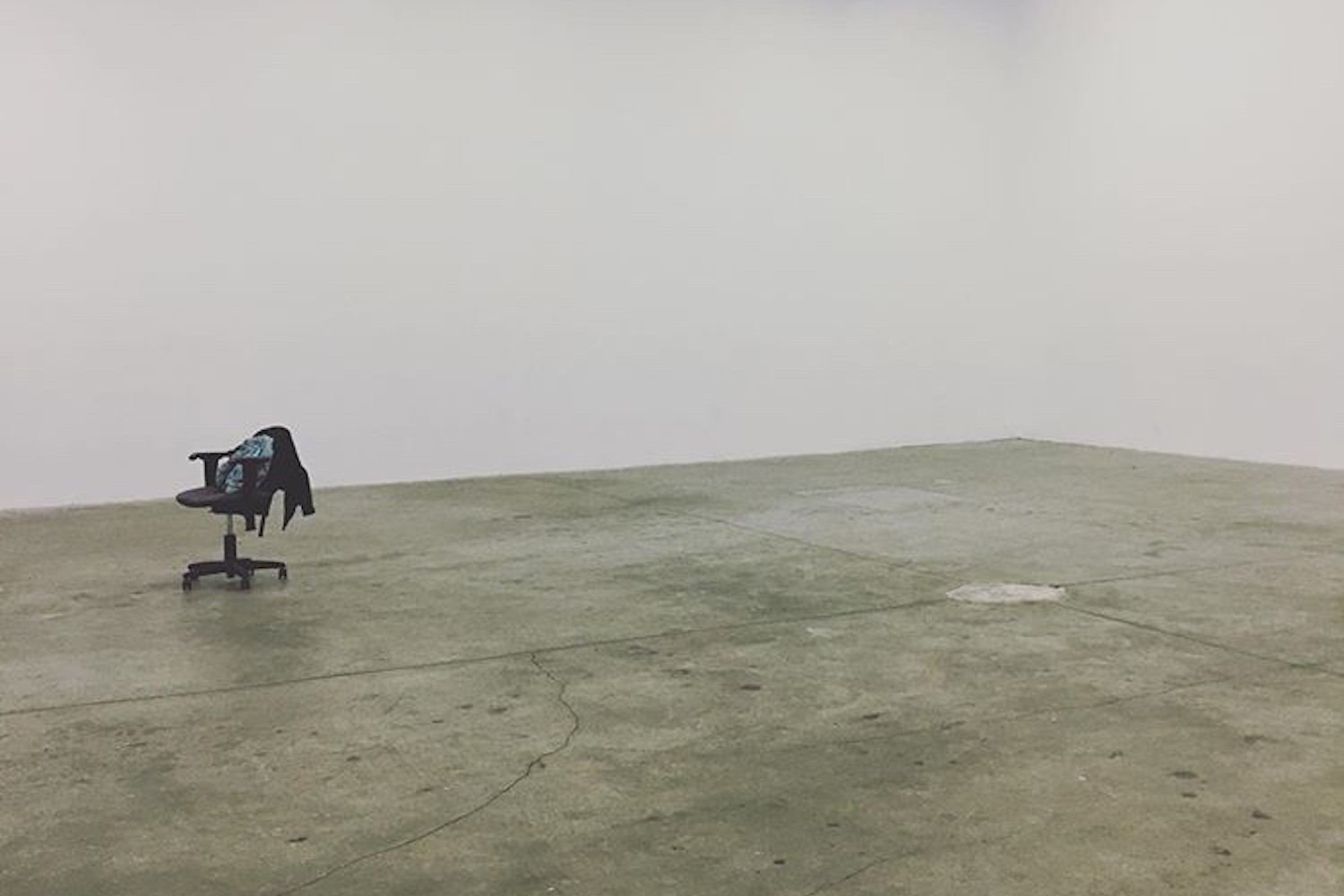Eve Fowler: The last four or so paintings in the Vielmetter show seem to me much more “you” than anything I’ve seen you make. It’s like your true essence is in the work somehow. Do you agree with this?
Math Bass: I love that you see my “true essence” in this new body of work. Something did shift while I was making it. I felt like something intangible or immaterial was being carved out in most of these works. It was hard to approach a new medium. I found myself coming up against feelings of scarcity and fear that I couldn’t have anticipated — I mean extreme discomfort at points. To observe this clunky resistance slowly open up into ease was pretty remarkable. Joyful. In truth, I am highly sensitive. I feel and see things that are not always apparent, not visible to everyone. This can at times feel alienating. Ultimately it is a gift when you learn how to honor your sensitivity. It’s validating. We live in a culture where we want everything to be solid, we want our thoughts to be solid, our bodies to stay young.
We don’t want our houses to catch on fire and to burn. However, this is simply not the nature of existence. We do grow old and we do get sick and our houses are temporary.
EF: It looks like there is an emotional shift in the work. In terms of content — camel skeleton, a grave, a brick wall — these things are timeless but also feel so topical, for you and for the world. The brick wall is so good. The last ten months have been the ultimate brick-wall experience. This painting has a certain gravity and a real sense of humor, though maybe you don’t see it that way. How did you come to make this?
MB: I think this idea of “the wall” is deeply embedded in our psyches. We have seen this wall come up when a society is approaching a great ideological shift, in order to prevent that shift from occurring, in order to keep humans apart and to keep humans out, and to contain, contain, contain. It is also this perfect a-compositional readymade. It is also something that I stare at, staring at a wall.
In the states it has been a great motivational anthem for the right, this delusional fantasy to rally around. Unifying around divisive and violent ideologies and actions. And yes, I was also intending for humor to come through in the painting.
EF: Can you tell me a little about the camel skeleton?
MB: The phrase “camel skeleton” came to me one afternoon as I finished up a daily meditation. The phrase popped into my head simultaneously with the dinging of a meditation bell, which is on an app. My phone dinged and I heard “camel skeleton.” I came across an image of an intact camel skeleton that was unearthed during the construction of a shopping complex in Vienna. An Ottoman “war camel” fell to its death during the seventeenth century and was “discovered” in 2006. It was assumed to be a horse or cow. It reminded me of the mysterious bog mummies, in that timelines begin to collapse when we find something ancient and out of place while doing something pretty banal, like building a mall or digging for peat moss.
And then the actual making of it holds a period of time that spans three months, with multiple life-altering pauses. Like striated rock, it is a layered record of a period of time.
My mom passed away at the end of September. My family lives in New York and I ended up staying on the East Coast for three weeks after she died. When I was in New York I started reading a book called “How to Do Nothing” by Jenny Odell. Thomas Merton, a Trappist monk and devout spiritualist, is mentioned in this book. I felt drawn to him. When I got back to LA, I ordered his autobiography, The Seven Storey Mountain. The book begins like this:
On the last day of January 1915, under the sign of the Water Bearer, in a year of a great war, and down in the shadows of some French mountains on the borders of Spain, I came into the world. Free by nature, in the image of God, I was nevertheless the prisoner of my own violence and my own selfishness, in the image of the world into which I was born. That world was a picture of Hell, full of men like myself, loving God and yet hating Him; born to love Him, living instead in fear and hopeless self-contradictory hungers.
Not many hundreds of miles away from the house where I was born, they were picking up the men who rotted in rainy ditches among the dead horses and the ruined seventy-five, in a forest of trees without branches along the river Marne.
I was interested in his life and his journey towards asceticism. He was adamantly anti-war and radical in his politics. He was found dead in his hotel room in Bangkok. The circumstances behind his death were suspicious. It’s rumored that he was assassinated by the CIA.
I started searching for images of him to get a sense of what he looked like, and I came across a series of images of his grave at an abbey in Kentucky. In all of the images it’s his stone with identical stones surrounding it, but his stone is always adorned with flowers or rosaries. Or in this case, I found an image of it with a satin sash. I was moved by it. I was moved by the animism of the sash around the clover-shaped stone and by the fullness of this absence. The grave as a marker of absence, a space held open.
EF: Can you tell me more about the head of Anubis?
MB: Anubis is an ancient Egyptian god — god of death, mummification, embalming, the afterlife, cemeteries, tombs, and the underworld. Anubis is ordinarily pictured with the head of a jackal, as seen in this painting.
Anubis attended the weighing scale during the “weighing of the heart,” in which it was determined whether a soul would be allowed to enter the realm of the dead. This particular Anubis was inspired by an artifact from around 1539 BCE (now in the Brooklyn Museum) which likely once surmounted a canopic box — canopic chests are cases used by ancient Egyptians to contain the internal organs removed during the process of mummification.
I was inspired by the keen alertness of the artifact and the iconic shape of Anubis’s profiled head, which inspired me to translate it into my own painterly language.
Just as once Anubis presided over the mummification of the citizens of ancient Egypt, now mummification takes place in the museum as part of an archival and colonial project. The white hand with glove represents the archiving, organizing principle that picks over, flattens, and organizes what was once sacred and mythological. Yet the spirit of Anubis persists.
EF: In your new body of work you transition from the more abstract work that you have been known for to slightly more figurative work. Do you think the medium is somewhat responsible for the change in content? Or what do you think is responsible for the change in content?
MB: Over the last seven and half years I worked more explicitly on the “Newz!” series. “Newz!” is an ongoing investigation into semiotics and visual processing. The series is composed of a recurring lexicon of symbols, a continually transitioning visual language in which tensions are drawn between language and meaning. Using brightly colored shapes and hyper-stylized imagery, the series varies between the immediately recognizable to the delightfully ambiguous.
It is not that my personal essence is not in “Newz!” because it certainly is. However, there is an opacity to it, an internal logic that has less to do with abstraction and more to do with musical notation and reifying abstract systems of meaning. We fill and imbue this otherwise empty container with meaning through relationship. Relationship is unfixed and always in a state of negotiation.
I had been wanting to work with oil for some time, though it felt daunting, unapproachable even. The pandemic hit and I found myself with a surplus of time; many of my projects got delayed by months to a year, some fell through entirely, and I found myself with the time that I needed to really dive deep into a new medium. There was this relief, a release of pressure.
EF: So your new work is very different from what you previously made. Can you tell me why you decided to make this change — how it came about and how it feels?
MB: Up to this point, the method of image making I had developed required a great deal of precision. The “Newz!” paintings are hard-edged acrylic-based gouache on raw canvas. They were not taped off, and were done entirely by hand with the exception of any gradients, which had to be taped off. The process was extremely meticulous and left little to no room for error. I found this method to be unworkable under the confines of lockdown. Something needed to soften.
I am finding so much pleasure in working with this visual lexicon in oil, as it is forgiving and leaves room for surprise. It has been deeply satisfying to witness a flat, flat language undergoing this dimensional shift.
I can also identify a shift from making work that was generated from an internal space, i.e., working with a self-generated lexicon, to making work that is more external, i.e., a rendering of Thomas Merton’s grave. I am finding my interest broadening towards found images, or recomposing found images, and I am locating this desire to resurrect an image that I find to be poignant and relatable to this moment. It’s much more personal/topical in that respect.

